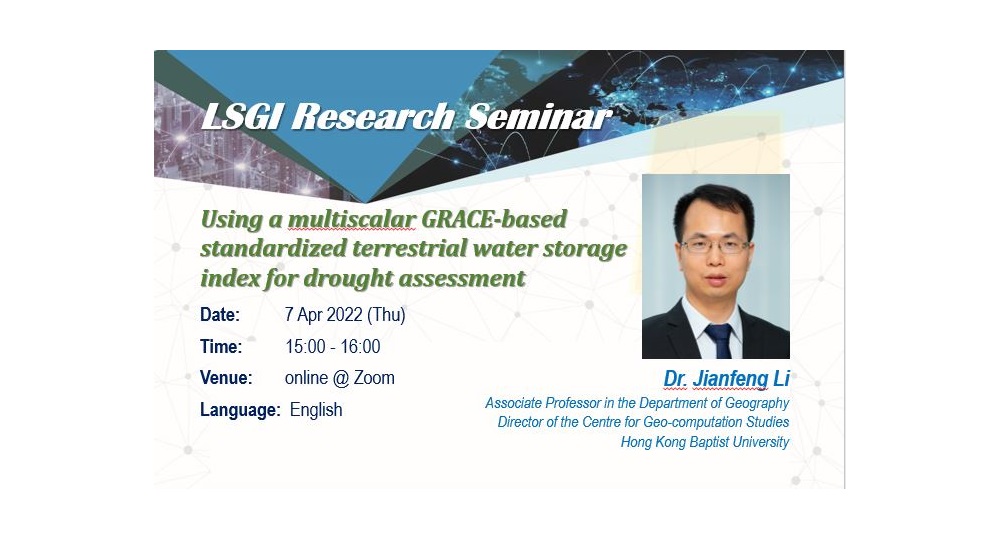Using a multiscalar GRACE-based standardized terrestrial water storage index for drought assessment

-
Date
07 Apr 2022
-
Organiser
Department of Land Surveying and Geo-Informatics
-
Time
15:00 - 16:00
-
Venue
Online@Zoom
Speaker
Dr. LI Jianfeng
Summary
Multiscalar standardized drought indices, such as Standardized Precipitation Index (SPI) and Standardized Precipitation Evapotranspiration Index (SPEI), have been commonly used in drought studies. These indices can reflect the standardized statistical deviation of a water component (e.g., precipitation, soil moisture) to its climatology at multiple time scales. In this study, we propose a multiscalar standardized terrestrial water storage index (STI) based on GRACE measurements to assess drought conditions. STI shows the statistical deficit of the integration of sub-surface and surface hydrological components (e.g., soil moisture and groundwater) as measured by terrestrial water storage from GRACE satellites. Because of the statistical nature of its definition, the proposed STI is comparable to other standardized drought indices such as SPI and SPEI across different regions at multiple time scales. Our comparisons of STI with other standardized drought indices and the GRACE-based drought severity index (DSI) show that STI can capture drought events with less noise than other indicators in persistent drought events. STI at short-term time scales (e.g., 3 and 6 months) have higher correlations with SPI/SPEI at long-term scales (e.g., 18 and 24 months), because STI is based on terrestrial water storage. STI is also better correlated with vegetation changes reflected by Normalized Difference Vegetation Index (NDVI) than uni-scalar drought indices.
Keynote Speaker
Dr. LI Jianfeng
Associate Professor in the Department of Geography
Director of the Centre for Geo-computation Studies
Hong Kong Baptist University
Dr. Jianfeng Li is an Associate Professor in the Department of Geography and Director of the Centre for Geo-computation Studies of Hong Kong Baptist University. His major research interests include hydroclimatology, environmental change, and water hazards, focusing on climate change impacts on hydrological processes and the environment, especially hydrological and climatic extremes. He is an associate editor of Hydrological Processes, an international journal in hydrology, and has been active in serving in various professional communities. His studies have been published in top-tier journals, including Nature Climate Change, PNAS, Journal of Hydrometeorology, and Journal of Geophysical Research: Atmospheres.



